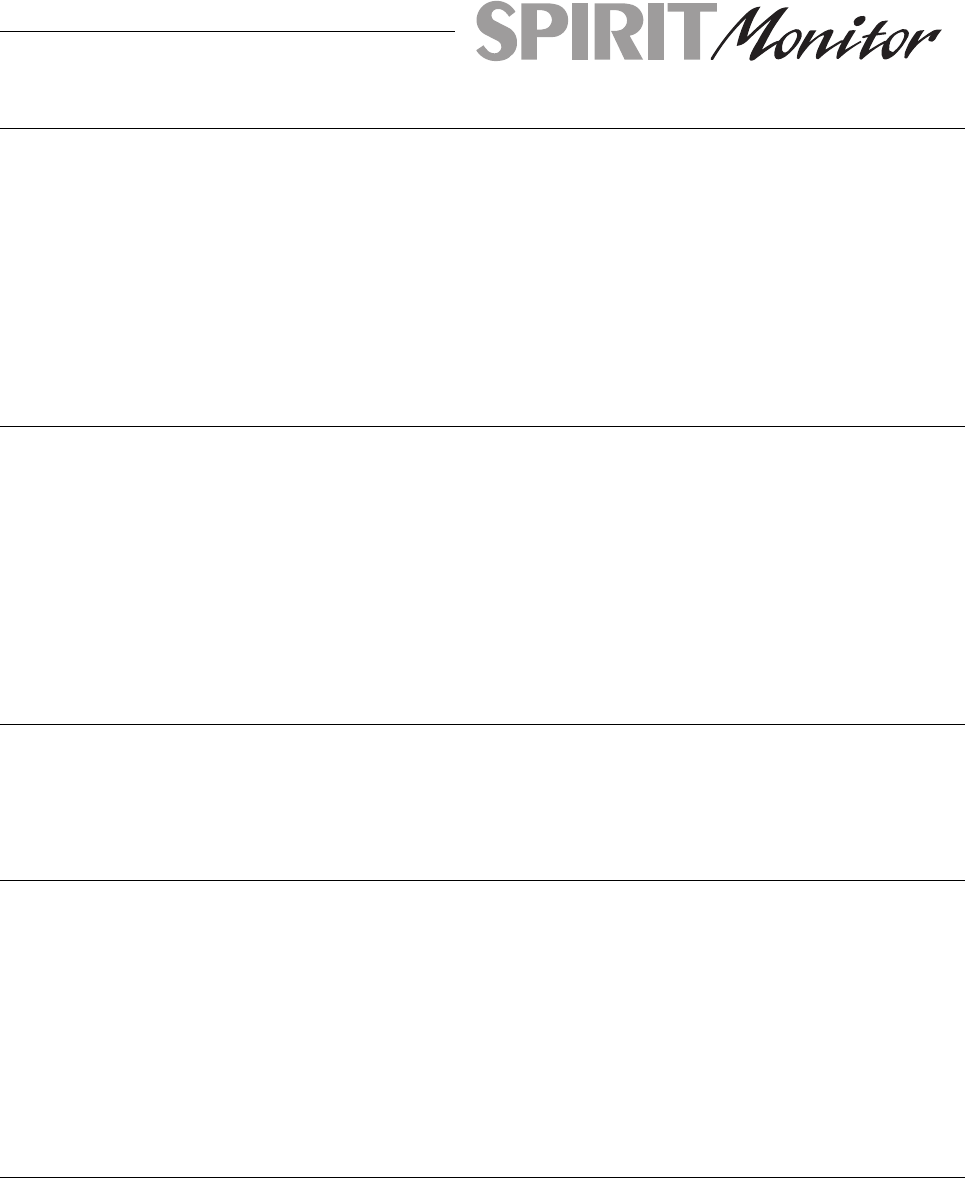
switch is pressed (LED illuminated).
4. HI-PASS FILTER
A variable frequency filter is provided covering a range of
20Hz to 200Hz., and this is always in circuit. This may be
found useful to reduce the level of stage-driven low frequency
feedback, or particularly to tailor the output frequency to
match more closely the frequency range of smaller wedge
monitor speakers which may not be able to tolerate high lev-
els of LF signal. Rotate the control fully anticlockwise when
the filter is not required.
5. TALKBACK
Pressing the TALKBACK switch routes the engineer’s talk-
back microphone signal to the monitor output, at the level set
on the T/B gain control on the Master section, and inde-
pendent of the output fader level. At the same time the local
monitor mix is dimmed by approximately 6dB to allow the
engineer’s voice to be heard over the mix, and the Wedge out-
put also dims to prevent feedback through the talkback mic.
Note that Talkback is disabled when DIM is pressed.
6. DIM
Pressing the large DIM switch attenuates the monitor output
by 6dB as an immediate way of eliminating feedback while
the source of the problem is identified.
7. PFL
When the PFL switch is pressed, the Pre-Fade signal is fed to
the headphones, replacing the normal submix signal. The
PFL ACTIVE LED on the master section illuminates to warn
that the wedge/phones outputs and the meter are now re-
sponding to the PFL selection and the PFL LED on the input
channel lights to identify the active channel. This is a useful
way of listening to any required signal so that adjustments
can be made or problems traced.
8. BARGRAPH METER
A sixteen segment, three colour bargraph meter monitors the
output signal. The meter has a peak response, and since it
reads the final output signal it will also be affected by the
DIM switch and include any talkback signal. The bargraph
may be calibrated by a trimmer accessed via a hole in the
panel above the meter. Adjustments may be made using a
Page 17


















